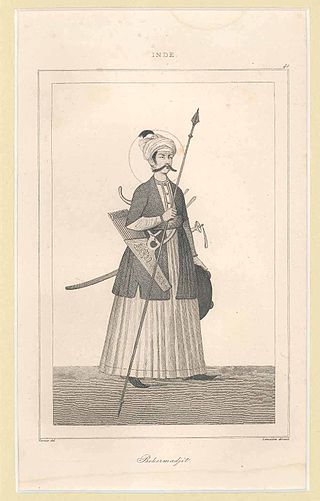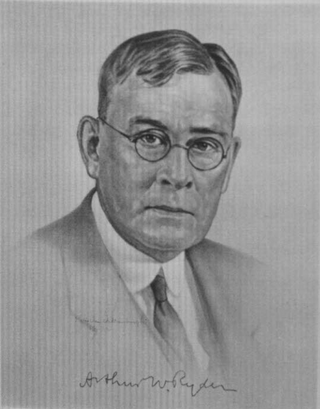
The Kama Sutra is an ancient Indian Hindu Sanskrit text on sexuality, eroticism and emotional fulfillment. Attributed to Vātsyāyana, the Kamasutra is neither exclusively nor predominantly a sex manual on sex positions, but rather a guide on the art of living well, the nature of love, finding partners, maintaining sex life, and other aspects pertaining to pleasure-oriented faculties. It is a sutra-genre text with terse aphoristic verses that have survived into the modern era with different bhāṣyas (commentaries). The text is a mix of prose and anustubh-meter poetry verses.

The Jātaka are a voluminous body of literature native to the Indian subcontinent which mainly concern the previous births of Gautama Buddha in both human and animal form. Jataka stories were depicted on the railings and torans of the stupas. According to Peter Skilling, this genre is "one of the oldest classes of Buddhist literature." Some of these texts are also considered great works of literature in their own right.

Kālidāsa was a Classical Sanskrit author who is often considered ancient India's greatest poet and playwright. His plays and poetry are primarily based on Hindu Puranas and philosophy. His surviving works consist of three plays, two epic poems and two shorter poems.
Ṛtusaṃhāra, often written Ritusamhara, is a medium length Sanskrit poem.
Hitopadesha is an Indian text in the Sanskrit language consisting of fables with both animal and human characters. It incorporates maxims, worldly wisdom and advice on political affairs in simple, elegant language, and the work has been widely translated.

Vikramaditya was a legendary king as mentioned in ancient Indian literature, featuring in traditional stories including those in Vetala Panchavimshati and Singhasan Battisi. Many describe him as ruler with his capital at Ujjain. "Vikramaditya" was also a common title adopted by several monarchs in ancient and medieval India, and the Vikramaditya legends may be embellished accounts of different kings. According to popular tradition, Vikramaditya began the Vikrama Samvat era in 57 BCE after defeating the Shakas, and those who believe that he is based on a historical figure place him around the first century BCE. However, this era is identified as "Vikrama Samvat" after the ninth century CE.
Kāvya refers to the Sanskrit literary style used by Indian court poets flourishing between c.200 BCE and 1200 CE.

Śukasaptati, or Seventy tales of the parrot, is a collection of stories originally written in Sanskrit. The stories are supposed to be narrated to a woman by her pet parrot, at the rate of one story every night, in order to dissuade her from going out to meet her paramour when her husband is away. The stories frequently deal with illicit liaisons, the problems that flow from them and the way to escape those crises by using one's wits. Though the actual purpose of the parrot is to prevent its mistress from leaving, it does so without moralising. At the end of the seventy days, the woman's husband returns from his trip abroad and all is forgiven. Most of the stories are ribald and uninhibited, with some verging on the pornographic. The situations depicted in the stories not only test the bounds of marriage, some stray into taboo areas of incest and, in one case, zoophilia.

Singhasan Battisi is a collection of Indian folk tales. The title literally means "thirty-two (tales) of the throne". In the frame story, the 11th century king Bhoja discovers the throne of the legendary ancient king Vikramaditya. The throne has 32 statues, who are actually apsaras that had been turned into stone due to a curse. Each of the apsaras tells Bhoja a story about the life and adventures of Vikramaditya, in order to convince him that he is not deserving of Vikramaditya's throne.

Arthur William Ryder was a professor of Sanskrit at the University of California, Berkeley. He is best known for translating a number of Sanskrit works into English, including the Panchatantra and the Bhagavad Gita.

A brahmarakshasa is one of a class of rakshasas, a race of usually malevolent beings in Hinduism. A member of the Brahmin class who engages in unrighteous deeds is cursed to become a brahmarakshasa after his death.
Kshemendra was an 11th-century Sanskrit polymath-poet, satirist, philosopher, historian, dramatist, translator and art-critic from Kashmir in India.
A subhashita is a literary genre of Sanskrit epigrammatic poems and their message is an aphorism, maxim, advice, fact, truth, lesson or riddle. Su in Sanskrit means good; bhashita means spoken; which together literally means well spoken or eloquent saying.

Johannes Hertel was a German Indologist.
The Samaya Mātrikā is a satire written by the 11th-century Kashmiri poet Kshemendra. Originally written in Sanskrit, the work has since been translated into English by A. N. D. Haksar.
Gaudavaho, also known as Gauḍavaha, is an 8th-century Prakrit-language epic poem by Vākpatirāja. It narrates the exploits of the poet's patron, king Yashovarman, who ruled in northern India. The poem deifies the king as an incarnation of the god Vishnu, and credits him with several military achievements, including slaying of the Gauda king.









